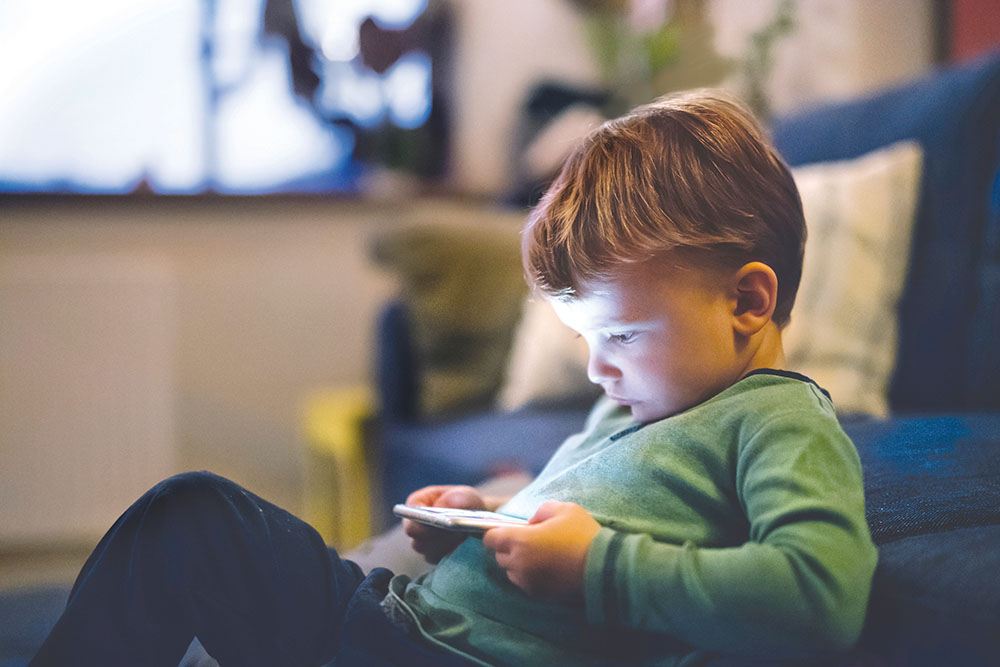Helping Families Find a Healthy Balance
Help find balance by spending time with your child on digital devices, for example, with a video call to a relative.
Feel like screens are eating into family time? We have some tips from experts for setting limits on screen use and cultivating healthy digital habits in your family.
- Model Healthy Habits
Modeling good habits is one of the most effective ways to help kids develop a healthy relationship with screens. You can show them how to strike a balance by limiting your own screen use and prioritizing other activities.
- Make Family Time Screen-Free
NIH researchers working on the Adolescent Brain Cognitive DevelopmentSM (ABCD) Study emphasized the importance of face-to-face interactions and suggested putting devices away during mealtimes and family gatherings. Treat screen-free time as an opportunity to listen, share, and truly connect with one another.
- Create Screen-Free Spaces
Designate certain spaces in your home as screen-free. Keeping TVs, computers, and other electronic devices out of places such as bedrooms or kitchens can promote better sleep and help keep family interactions open and connected. Keeping devices out of private spaces also makes screen use easier to monitor and manage.
- Balance Screens With Other Activities
Replace time on screens with fun, engaging activities that support development. Getting involved in activities like sports, playing outdoors, reading, board games, and creative hobbies can help break the habit of reaching for a device out of boredom. Martin Paulus, M.D., a principal investigator for an ABCD Study® site who oversees NIH-funded research on screen use, emphasized that physical activity is especially important for child development and mental health.
- Be Mindful of Screen Use at Bedtime
Blue light from devices can disrupt sleep, especially for children. Turn off screens at least an hour before bedtime. Charge devices outside of bedrooms and replace screen time with calming activities like reading or journaling.
- Tap Into Technology Wisely
Explore parental controls, app timers, and activity reports to help manage screen use. These tools can help families track and limit digital time effectively.
- Think About the “How,” Not Just the “How Much”
Screen time isn’t just about the hours spent—it’s about how that time is used. Help your child find a balance by focusing on content that sparks learning or creativity. Spend time with them exploring what they’re doing on their device and work together to find ways to make their digital time meaningful.
You can adjust your screen time strategies as your family grows and changes. By setting realistic, flexible limits, you can turn devices into tools for connection and learning—without letting them take over.
Information from NIH: National Library of Medicine

